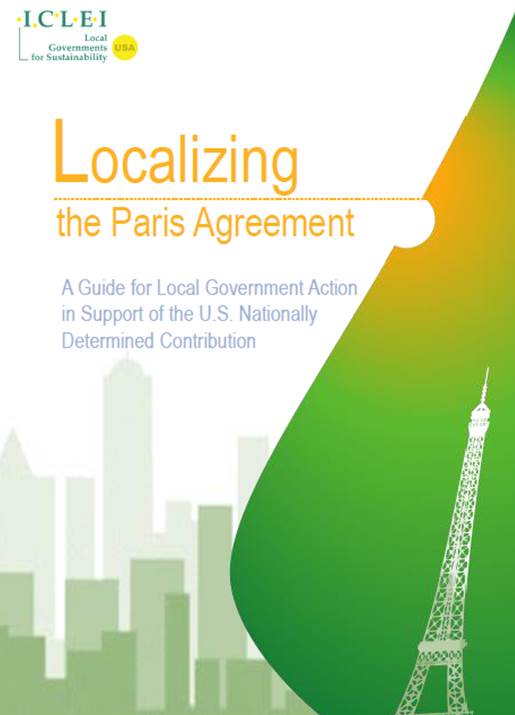About This Guide
In December 2015, after years of negotiations, 197 countries made a commitment to work together to address climate change. The Paris Climate Agreement came into force on November 4, 2016, and is seen as a turning point for global climate policy and the ability for international cooperation to safeguard the planet. Despite this unprecedented international unity to tackle a global threat, in June 2017, the White House announced that the United States would withdraw from the accord.
Although the federal government also has walked away from domestic climate action by eliminating the U.S. State Department’s Special Envoy for Climate Change position and by choosing to disband NOAA’s advisory committee on climate change, the outpouring of support for Paris by thousands of mayors, county officials, and city council members — through campaigns such as We Are Still In, Global Covenant of Mayors for Climate & Energy, and U.S. Climate Mayors — shows that local governments have not.
This guide is intended to help local governments go beyond pledges and move toward action on implementing the Paris Agreement. Focusing solely on the national policies that can uphold the U.S. Paris Commitment (or lamenting the lack thereof) fails to capture some of the most promising actions that can achieve demonstrable emissions reductions. Those will happen locally.
Download the full guide [PDF].
